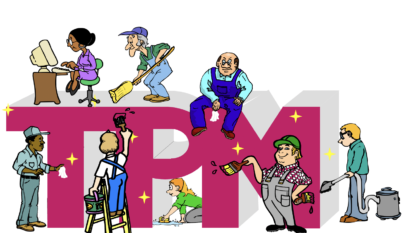In-Line Air Lubricators
These lubricators lubricate the air supply to air operated equipment. Do you work on any air operated equipment? Drip rates can be adjusted using the adjustment knob on top of the lubricator.
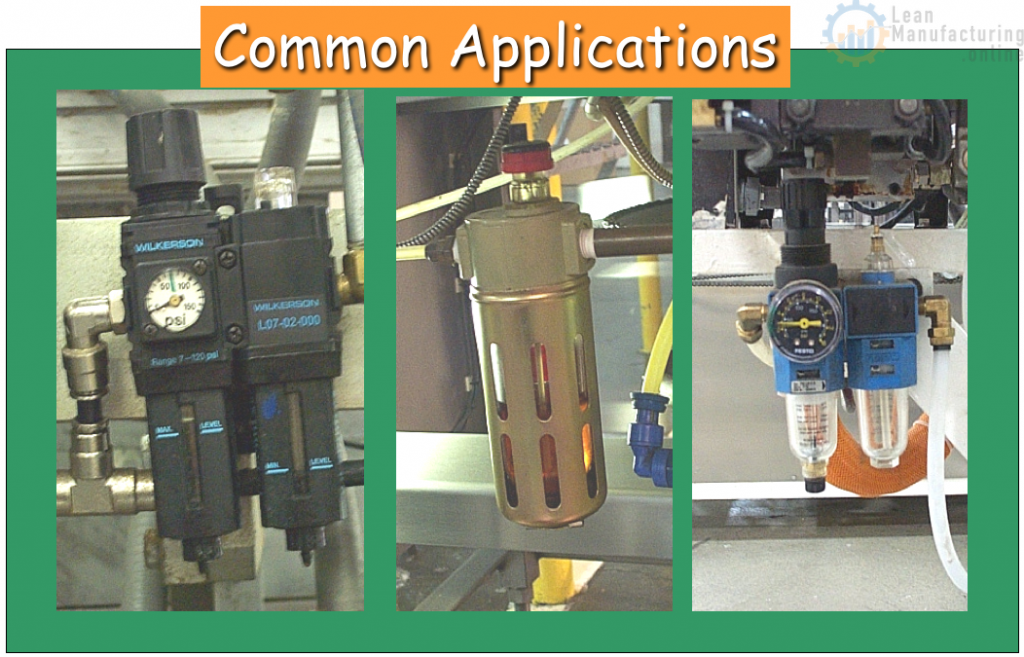
Components Identified
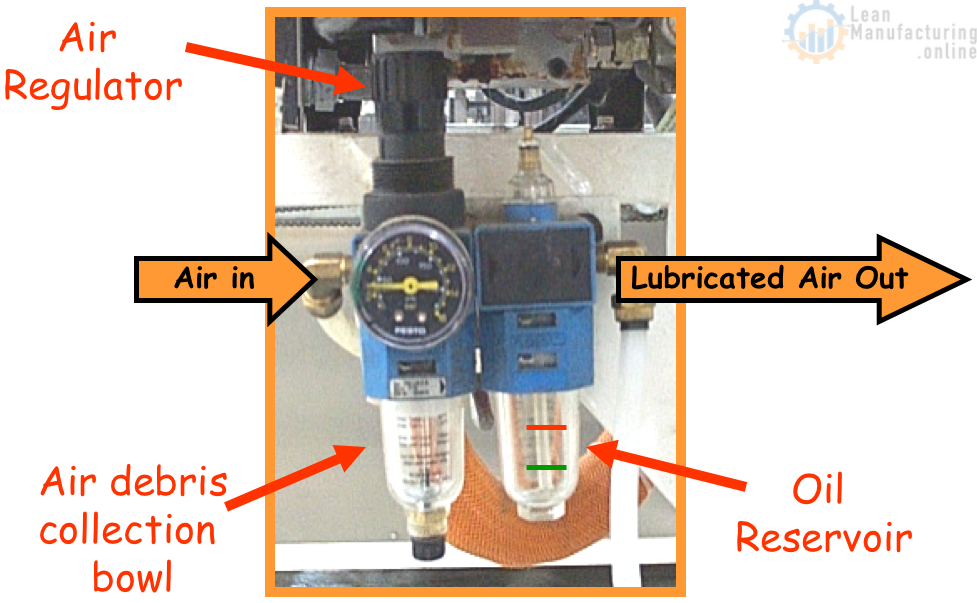
Air lubricators cannot be filled while pressurized. Pressure must be removed by activating the air dump or closing the isolation valve. Always remove the fill port cap “slowly” to remove the remaining pressure.
REMEMBER YOUR LOCK OUT/TAG OUT PROCEDURES!
Lubricant Amounts
2 potential problems:
- Too Much (over lubrication)
- Too Little (under lubrication)
Over Lubrication
Over lubrication occurs when the amount of lubricant exceeds the required amount to adequately reduce the friction between moving parts.
Potential problems:
- Damage to machine seals
- Component leaks
- Undue stress and wear on motors/parts
- Contamination of product
- Increased friction

Under Lubrication
Under lubrication occurs when the amount of lubricant falls below the required level to prevent friction between moving parts.
The main problem is machine parts seizing up and irreparable damage. Even if levels are low, friction on moving parts will increase and cause damage over time.
- Follow machine documentation.
- Verify correct lubricant is used.
- Check levels and amounts used.
- Observe flow and amount where possible.
- Uses senses to observe undue friction (how?)
- Label lubrication points with type/amount (tags)
- Be aware of unusual changes in machine usage.
- Follow lubrication schedule!
Lubrication Effects
- Downtime for adjustment
- Frequency and seriousness of breakdown
- Product quality
- Percentage of product rework
- Cost of machine maintenance
- Equipment life cycle
- Reduced speed losses
- Reduced minor stoppages
Tools used for Lubrication
- Grease guns
- Pumps – oil cans or oil bottles
- Spray lubes
Grease Gun
Hand powered lubricators with special fittings on the end of hoses that connect to grease fittings on equipment.

Guidelines for use
- Verify correct lubricant is used
- Verify grease is present in supply cylinder
- Check proper operation
- Wipe off zirc to prevent contamination
- Insert outlet fitting of gun on the zerk fitting
- Keep outlet tube straight on zerk fitting
- Verify transfer of greases by handle/lever pressure
- Watch for grease around outlet/zirc connection
- Do not over grease. (Follow Standard)
- Wipe off excess grease
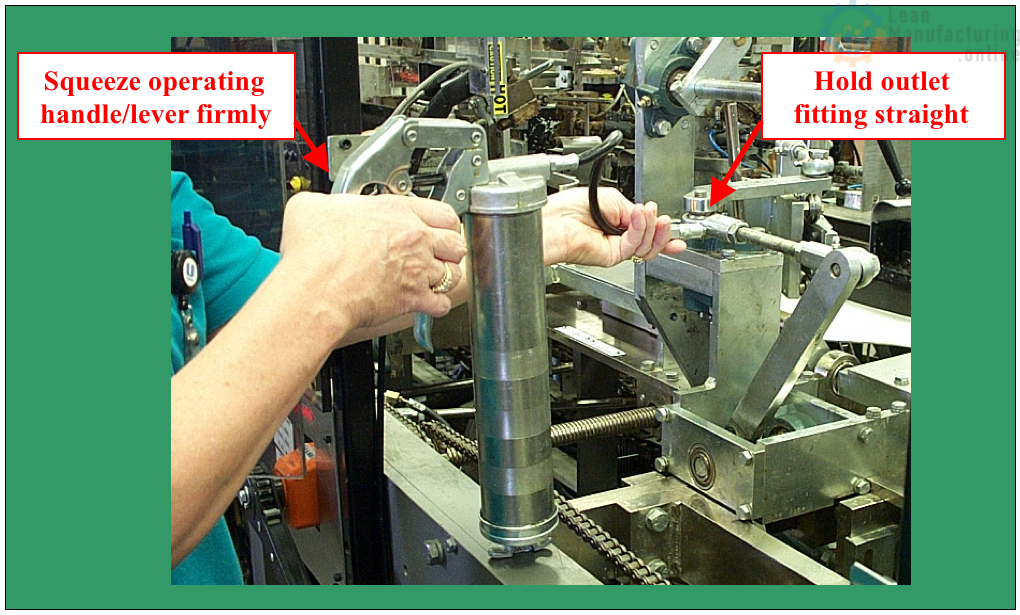
Oil cans
Hand lubricators that are used to apply oil directly to machine parts such as chains and sprockets and to fill local oilers.

Guidelines for use
- Verify correct oil is in can for parts to be lubricated
- Verify that can is operating properly
- Apply oil directly to parts only during shutdown to prevent oil from slinging onto associated equipment.
- Wipe up all excess oil
NEVER use the same oil can for two different types of oil. Even if the can is empty, the residue from the old oil will contaminate the new oil.
Spray Lubes
Aerosol-pressurized cans that spray lubricants on the parts to be lubricated. Designed for chains, wide surfaces and in hard-to-access areas.
Guidelines for use
- Verify correct type of lubricant
- Shake can vigorously
- Insert straw adapter if necessary
- Verify correct operation
- Direct spray at parts to be lubricated
- Do not over lubricate parts
- Clean any excess spray lubricant
- Return spray lubricant to proper storage

Hazards of Cross Contamination
Cross contamination is the mixing of different types and/or weights of lubricants.
- Always verify the correct lubricant has been obtained
- Always use lubricant specific containers
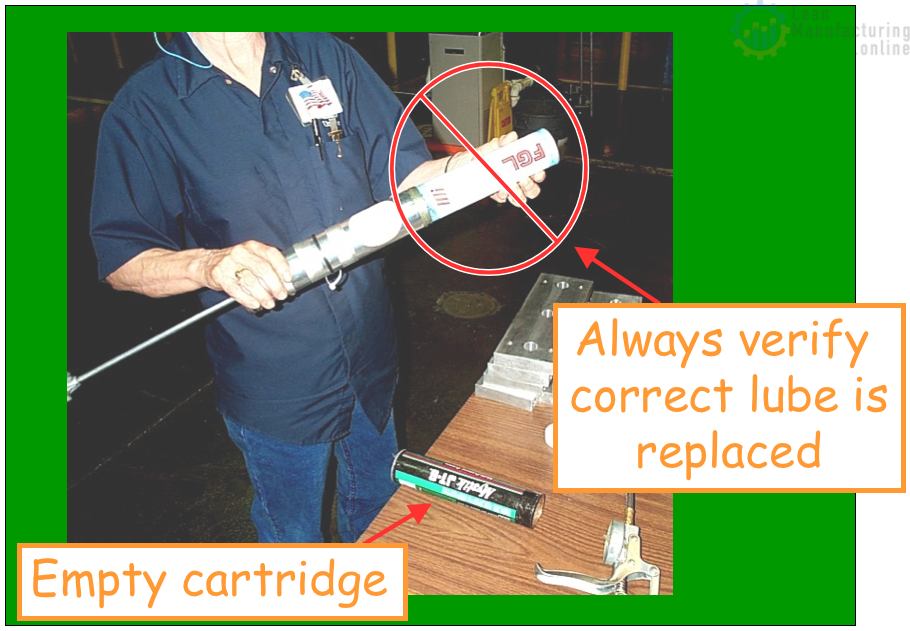
Lubrication Safety
- Always use LOTO, when specified
- Review HMIS – Hazardous Materials Identification System
- Minimize skin contact with used oil
- Clean up thoroughly
Hazardous Material Identification System Label
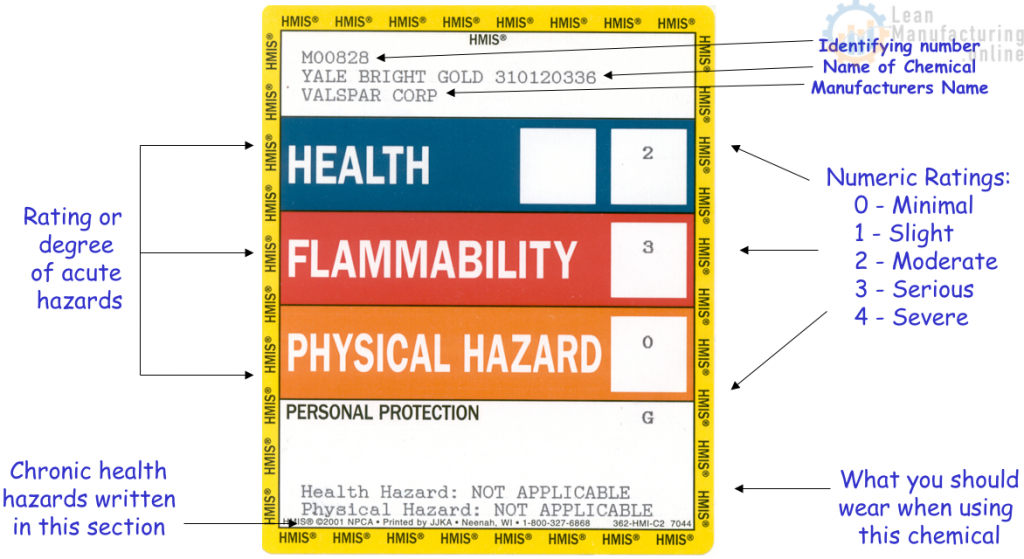
Don’t Forget about TAGGING!
- Abnormalities are potential problems
- Abnormalities accelerate deterioration of equipment
- Abnormalities are detected through cleaning and inspection
Remind them to tag, tag, tag! Now that operators are getting more and more AM Step 4 training, should the number of blue tags vs. red tags be changing.
Lubrication Competency
Assess knowledge gained by associates by demonstrating skill with “Hands on” practical exercises on physical models.












